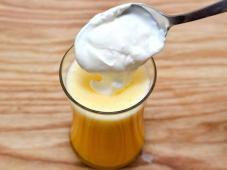
Time
30 min
Serving
24 persons
Calories
0
There is no Christmas in Britain without eggnog! This is a traditional drink that helps create that special Christmas spirit in each house! Let’s learn the recipe of this drink right away!
Ingredients
- egg: 12 piece (large)
- milk: 1 litre
- heavy whipping cream: 710 ml
- sugar: 360 g
- nutmeg: 1 pinch (or to your taste)
- rum: 3 cup
Metric Conversion
Stages of cooking
-
Separate the egg whites from the yolks. Put the yolks into a separate medium bowl. Try to be very careful when cracking the eggs, not to mix the whites with the yolks. Otherwise, the whites may not whisk well.

-
Mix the egg whites with 180 g of sugar until they become white and frothy. This may take much time and effort, if you do that manually, so, if you have a mixer, you are welcome to use it.
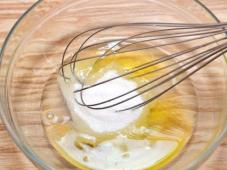
-
Now, it is high time to mix the egg yolks with the rest of sugar. Take a separate bowl to do that.
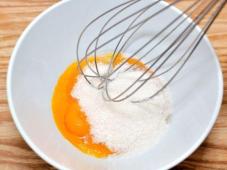
-
The next step is to combine two mixtures in one. Pour the egg yolk mixture into the egg whites carefully and mix them to get a smooth mass. Take as much time as you need to stir the egg mixture well.
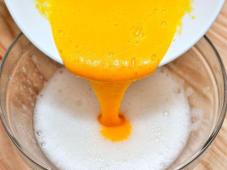
-
Now, add rum, milk and cream. Slowly pour the rum into the egg mixture, stirring it well. If you plan to serve the eggnog to children, you shouldn’t add alcohol, of course. Then, add the milk and cream slowly to the bowl, gently stirring them in. Some cooks recommend heating the milk and cream before adding to the egg mixture to help thicken and slightly cook the eggs. If you're worried about eating raw eggs, follow this step. To make your eggnog more dense, add less milk. This depends upon your taste and preferences.
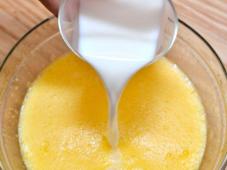
-
Take your time to whip the eggnog well. Pour the readymade eggnog into a large punch bowl for serving.
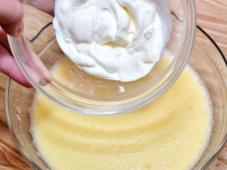
-
Top with whipped cream and dredge with grated nutmeg or cinnamon for extra flavor and great taste. Enjoy your eggnog with your friends and family!
